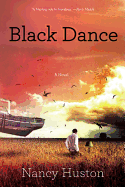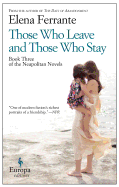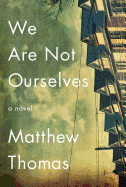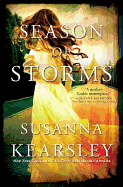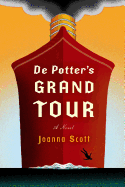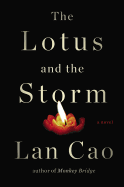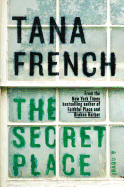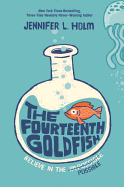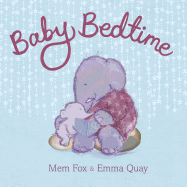.png) |
| photo: Le Phuong Mai |
During the 17-year gap between her novels Monkey Bridge (Viking, 1997) and The Lotus and the Storm (see our review below) Lan Cao gave birth to a daughter and established herself as a well-respected legal scholar in international development, all the while haunted by memories of the Vietnam War.
Cao's father was the late General Cao Van Vien, whose great hope for Vietnam was a professional military that would remain insulated from politics. But like Minh, the father in The Lotus and the Storm, his refusal to participate in the 1963 U.S.-backed plot to overthrow President Ngo Dinh Diem nearly cost him his life.
Lan Cao, like her protagonist Mai, had a wondrous childhood in Cholon, the Chinese section of Saigon. She left Vietnam in early spring of 1975, entrusted by her parents to the care of a close family friend. Thinking the trip would be temporary, Cao, who was 13 at the time, packed one suitcase, a few photographs and her favorite stamp album. Arriving in Avon, Conn., Cao watched the last days of Saigon on television and realized she would never go home again. Cao's parents were able to leave Vietnam hours before the collapse of Saigon, and the family was subsequently reunited in Northern Virginia. Cao graduated from Mount Holyoke College and Yale Law School and is now a professor at the Dale E. Fowler School of Law at Chapman University in Orange, Calif.
Tell us about the events that triggered The Lotus and the Storm.
I started the book in 2005. It might have been because what was happening in Iraq at the time started to echo, to me, what had happened in Vietnam. I finished the first draft in 2009 when I was in Vietnam with my daughter, primarily to enroll her in a Vietnamese school to jumpstart her Vietnamese. I revised the novel from 2009 until last year. When I started the book, my daughter was only 3. Now she's 12.
I wanted to write a novel that is both sweeping in scope and minuscule in detail. I wrote the novel late at night, usually after my daughter fell asleep. My fiction writing began around 9:30 or 10 p.m. and continued usually until 1 or 2 a.m., if I had momentum and felt like the writing was going well. I kept telling myself if I wrote one page a day, I would have a decent draft in a year. But it took much longer.
 What is the meaning behind the novel's title?
What is the meaning behind the novel's title?
It's about tension, the balance of opposites. Serenity and tempest. Peace and war. The religious significance is Buddhist--that is, the state of being open and receptive and spiritually calm despite murky or chaotic surroundings.
In the novel, Mai explains that six distinct tones in Vietnamese can produce six different meanings for certain words. If Bảo (treasure or keepsake--a concept presumably related to lotus) differs from Bão (storm) only by one tone, does it suggest that the lotus is another manifestation of the storm, and vice versa?
Yes, precisely so. One tonal change and the world shifts. For most of us, the balance is but a fine and delicate balance, to borrow from Edward Albee's A Delicate Balance (which explored different layers of loss and opened with Agnes's musings about the fragility of sanity) and Rohinton Mistry's A Fine Balance (in which the characters frequently spoke about the need to maintain a fine balance between hope and despair).
Do you ever feel pulled between law and fiction?
I do not feel pulled between law and fiction. I need stability and law offers stability for me. The routine of teaching and legal writing does not upset the (delicate and fine) balance I have strived for. I can see the result of each class and can tell if it went well. In legal writing, I have a body of research to turn to and the contours and structure of a law review article are more accessible. Fiction is messy, mysterious, unknowable, for the most part frustrating. Most of the time while writing I feel that I have failed at what I planned to do. Only later am I able to live with what has been written because I can let go of the original plan and appreciate what occurred instead. Nonetheless, the entire process is fraught.
The Tale of Kieu, Vietnam's epic national poem, is invoked in the novel, with similarities shown between Kieu and the mother, Quý, who uses her beauty to save the men in her life. Quý is a savvy businesswoman with financial resources and an extensive social network. She seems more liberated than most women in 1960s Saigon. Why does she have to resort to sex as a bargaining weapon?
It's true that Quý has financial resources and is savvy in the world of business. But that's only one market and it's a market many women--even if they have access to it--do not control or dominate. There are other markets, like sex and beauty, that historically and across cultures, women have been relegated to. It's interesting that sometimes, sex is the primary, if not the only, option for women.
You said in another interview that the Vietnam War still needs to be translated for Americans since Vietnamese refugees remember or experience it quite differently from the way it is perceived or experienced by Americans. Does the need to translate or explain a perspective not generally known impose an aesthetic burden on your fictional framework?
I have thought a lot about translations. In Brian Friel's play Translations, there is a memorable scene in which names of places known to the 19th century locals in Gaelic had to be altered and rendered into English to be recorded on a map for the English rulers. The act of mapping, which might at first seem like an innocuous, technocratic exercise in translation, became something much more intrusive and violent, reflecting the balance of power between the Irish and the English at the time. The powerful have the power to name cities or map countries. The victors, too, can rename. Saigon swiftly became Ho Chi Minh City in April 1975.
On one level, translating an experience to the wider American public poses no additional burden beyond that which most of us are already doing and/or already accustomed to. As refugees and immigrants, we're all translators navigating between the world of the native tongue (which ironically some of us don't even speak well) and the world of the adopted homeland.
Mai remarks that "[t]he molecular makeup of the melting pot is three parts mundane and only one part visionary." Would you elaborate?
Sometimes the American dream is portrayed as something that is a dazzling, slightly Pygmalion-like process that involves taking the raw material of the refugee or the immigrant and molding her into this new being called an American. Sometimes, it's a very violent process. I remember Bharati Mukherjee saying somewhere that it's akin to murdering a part of your old innate self and creating this new entity--but the new entity is a cobbled, brittle self prone to dissolution.
Other times, the route towards Americanization is quite uninspired and workmanlike--one new word, one new sentence, one new perspective at a time. I felt that way a little bit when I was in high school. I had just arrived and within three months had to be enrolled in the ninth grade, where apparently grades start to count. And I remember studying very hard and trying to fit in to the culture of school itself, navigating through PE class, the cafeteria line, the lunch table. And then there was the citizenship test to study for and to pass. But it felt like a technocratic endeavor--one math problem here, another bad experience there, being the last to be chosen in softball, a game I found mystifying. Nothing felt inspired and all of it felt like an exercise in slogging through the necessary steps to arrive at the destination. --Thuy Dinh, editor, Da Mau magazine
Lan Cao: A Delicate Balance
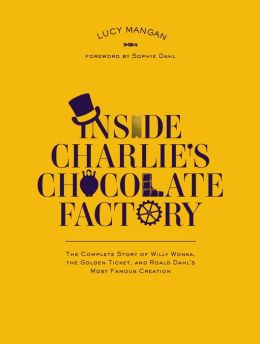



.png)
 What is the meaning behind the novel's title?
What is the meaning behind the novel's title? 